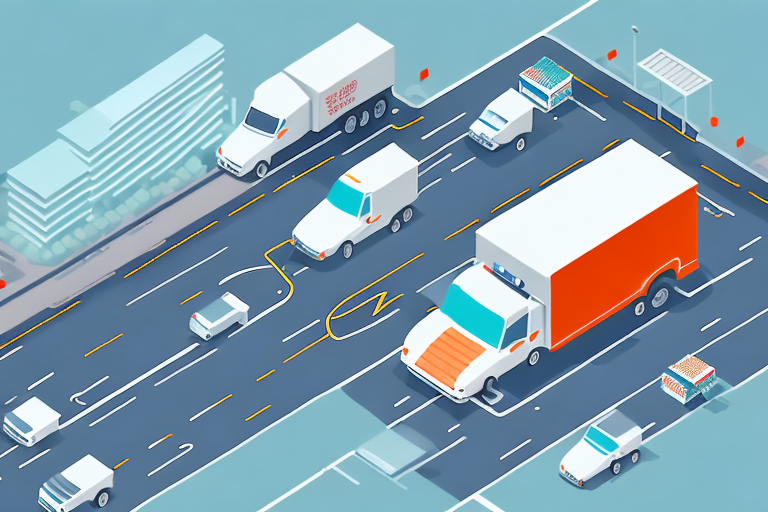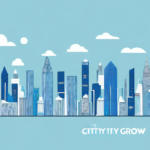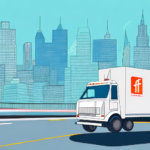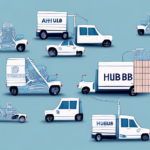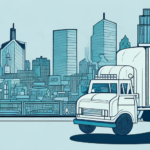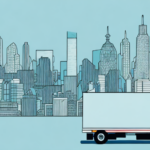The Importance of Last Mile Delivery in the Modern Economy
The last mile industry is a critical component of today's global economy, addressing the final leg of the delivery process from transportation hubs to end recipients. As e-commerce continues to surge, the demand for efficient and reliable last mile delivery has intensified, making it a key area for businesses striving to enhance customer satisfaction and maintain competitive advantage.
Economic Impact and Growth
According to a report by Statista, the last mile delivery market is projected to reach $75 billion by 2025, driven by the exponential growth of online shopping. This expansion highlights the increasing reliance on last mile services to fulfill consumer demands for fast and convenient delivery options.
Sustainability and Environmental Considerations
The last mile industry also plays a significant role in sustainability. Companies are adopting eco-friendly practices, such as utilizing electric vehicles and optimizing delivery routes to reduce carbon emissions. For instance, IBM reports that optimizing delivery routes can lower fuel consumption by up to 20%, contributing to environmental conservation efforts.
Key Players Shaping the Last Mile Landscape
The last mile delivery ecosystem consists of diverse players, including logistics providers, retailers, technology firms, and gig economy workers. Each plays a pivotal role in ensuring seamless delivery operations.
Logistics Providers
Major logistics companies like UPS, FedEx, and DHL dominate the last mile sector by leveraging extensive networks to facilitate efficient deliveries. These companies invest heavily in infrastructure and technology to enhance their delivery capabilities.
Retailers and E-Commerce Giants
Retailers, particularly e-commerce leaders like Amazon, prioritize last mile delivery to meet customer expectations for speed and reliability. Amazon's investment in its logistics network, including initiatives like Amazon Prime and Amazon Flex, exemplifies the strategic importance of last mile delivery in modern retail.
Technology Innovators
Technology companies are introducing innovative solutions such as drones, autonomous vehicles, and smart lockers to revolutionize last mile delivery. For example, Zipline utilizes drones to deliver medical supplies in remote areas, showcasing the potential of technology to overcome logistical challenges.
Gig Economy and On-Demand Delivery Services
Platforms like DoorDash and Uber Eats harness the gig economy to provide flexible and scalable delivery options. These services enable faster deliveries by leveraging a network of independent contractors, offering consumers greater convenience.
Evolution of Last Mile Delivery: Traditional vs. Modern Approaches
The last mile delivery sector has undergone significant transformation, shifting from conventional methods to more innovative and sustainable practices.
Traditional Delivery Methods
Historically, last mile delivery relied on personal vehicles and fixed delivery schedules. While reliable, these methods often faced challenges related to traffic congestion and inefficiency in urban settings.
Modern and Sustainable Solutions
Today's last mile delivery incorporates modern solutions such as:
- Electric Vehicles: Reducing emissions and operational costs.
- Bicycle Couriers: Ideal for urban environments with heavy traffic.
- Drones and Autonomous Vehicles: Enhancing delivery speed and reducing human labor costs.
- Smart Lockers and Pickup Points: Minimizing the need for individual deliveries and optimizing delivery routes.
These innovations not only improve efficiency but also align with global sustainability goals.
Crowdsourcing and Flexible Delivery Models
Crowdsourcing involves utilizing a network of independent contractors to manage deliveries, offering flexibility and scalability. This model allows companies to adjust their delivery capacity based on demand fluctuations, enhancing overall operational efficiency.
Challenges in Last Mile Delivery: Overcoming Barriers to Success
Despite its growth, the last mile delivery industry faces several challenges that hinder its efficiency and cost-effectiveness.
Infrastructure Limitations
Urban areas often lack the necessary infrastructure to support the increasing number of delivery vehicles, leading to traffic congestion and longer delivery times. Investments in urban logistics infrastructure are essential to mitigate these issues.
Rising Operational Costs
Labor costs continue to rise as logistics companies compete for a limited pool of delivery personnel. Additionally, fuel prices and vehicle maintenance contribute to the overall increase in operational expenses.
Environmental Impact
The proliferation of delivery vehicles contributes to air pollution and carbon emissions. Addressing these environmental concerns requires the adoption of greener delivery solutions and sustainable practices.
Technological Integration
Integrating advanced technologies into existing delivery systems poses both opportunities and challenges. While technology can enhance efficiency, it also requires significant investment and adaptation from traditional logistics providers.
The Role of Technology in Transforming Last Mile Delivery
Technology is a driving force behind the evolution of last mile delivery, offering innovative solutions to longstanding logistical challenges.
Automation and Robotics
Automated sorting systems and robotic delivery solutions streamline the delivery process, reducing the need for human intervention and minimizing errors. Companies like Starship Technologies are pioneering the use of delivery robots in urban settings.
Real-Time Tracking and Data Analytics
Real-time tracking systems provide visibility into the delivery process, enabling both companies and customers to monitor shipments. Data analytics further optimize delivery routes and improve operational efficiency.
Artificial Intelligence and Machine Learning
AI and machine learning algorithms predict delivery patterns, optimize routes, and enhance decision-making processes. These technologies enable more accurate demand forecasting and resource allocation.
Smart Lockers and Pickup Points
Smart lockers offer secure and convenient pickup locations, reducing the need for door-to-door deliveries and lowering the cost per delivery. This model also enhances customer convenience by providing flexible pickup options.
Sustainable Practices in Last Mile Delivery
Environmental sustainability is becoming increasingly important in the last mile delivery sector. Companies are adopting various eco-friendly practices to reduce their carbon footprint and promote sustainability.
Adoption of Electric and Hybrid Vehicles
Electric vehicles (EVs) and hybrid vehicles are being integrated into delivery fleets to lower emissions and reduce reliance on fossil fuels. Initiatives like Tesla's electric delivery vans exemplify the shift towards greener transportation solutions.
Optimizing Delivery Routes
Route optimization software minimizes travel distance and time, leading to lower fuel consumption and reduced emissions. Efficient routing also enhances delivery speed and reliability.
Eco-Friendly Packaging
Using sustainable packaging materials and reducing packaging waste contribute to environmental conservation. Companies are increasingly opting for recyclable and biodegradable packaging options.
Implementation of Smart Logistics
Smart logistics systems leverage IoT and data analytics to enhance delivery efficiency and sustainability. These systems enable better resource management and reduce the environmental impact of delivery operations.
Enhancing Customer Experience in Last Mile Delivery
Customer experience is paramount in the last mile delivery sector, influencing customer satisfaction and loyalty. Companies are implementing various strategies to enhance the delivery experience.
Real-Time Tracking and Notifications
Providing customers with real-time tracking information and timely notifications about their deliveries enhances transparency and trust. This feature allows customers to plan their schedules around delivery times.
Flexible Delivery Options
Offering flexible delivery options, such as same-day delivery, evening deliveries, and pickup points, caters to diverse customer preferences and needs. Flexibility improves convenience and customer satisfaction.
Personalized Delivery Experiences
Personalization through tailored delivery options, such as preferred delivery times and specific handling instructions, creates a more customized and satisfying customer experience.
Efficient Returns Management
Streamlining the returns process ensures a hassle-free experience for customers, fostering trust and encouraging repeat business. Efficient returns management systems simplify the process for both customers and companies.
Future Trends and Innovations in Last Mile Delivery
The last mile delivery industry is poised for significant advancements, driven by technological innovations and evolving consumer expectations.
Drones and Autonomous Vehicles
Drones and autonomous vehicles are set to revolutionize last mile delivery by offering faster and more efficient delivery options. Companies like Amazon Prime Air are exploring drone delivery to expedite the shipping process.
Integration of Artificial Intelligence
AI will play a crucial role in predictive analytics, demand forecasting, and autonomous decision-making, further optimizing delivery operations and enhancing efficiency.
Green Delivery Solutions
The emphasis on sustainability will drive the adoption of greener delivery solutions, including the use of renewable energy sources and the development of eco-friendly logistics infrastructure.
Blockchain for Transparent Logistics
Blockchain technology can enhance transparency and security in the delivery process, ensuring data integrity and building trust among stakeholders.
Best Practices for Effective Last Mile Delivery Management
Implementing best practices is essential for optimizing last mile delivery operations and overcoming industry challenges.
Leverage Advanced Technology
Adopting technologies such as GPS tracking, automated sorting systems, and data analytics can streamline operations and improve delivery accuracy.
Foster Collaboration and Partnerships
Collaboration between logistics providers, retailers, and technology firms can lead to more efficient and effective delivery solutions. Strategic partnerships enhance resource sharing and operational synergy.
Focus on Sustainability
Implementing sustainable practices not only benefits the environment but also appeals to environmentally conscious consumers. Prioritizing sustainability can differentiate a company in a competitive market.
Enhance Workforce Management
Effective workforce management ensures adequate staffing levels and optimizes delivery operations. Training and incentivizing delivery personnel can improve performance and job satisfaction.
Prioritize Customer Communication
Maintaining clear and consistent communication with customers regarding delivery status and expectations fosters trust and enhances the overall customer experience.
Conclusion
The last mile delivery industry is a dynamic and rapidly evolving sector, essential to the success of modern commerce. As e-commerce continues to grow, the demand for efficient, reliable, and sustainable last mile delivery solutions will only increase. By embracing technological innovations, addressing key challenges, and prioritizing customer experience, companies can thrive in this competitive landscape. The future of last mile delivery promises continued advancements that will further streamline operations, reduce environmental impact, and enhance consumer satisfaction.













